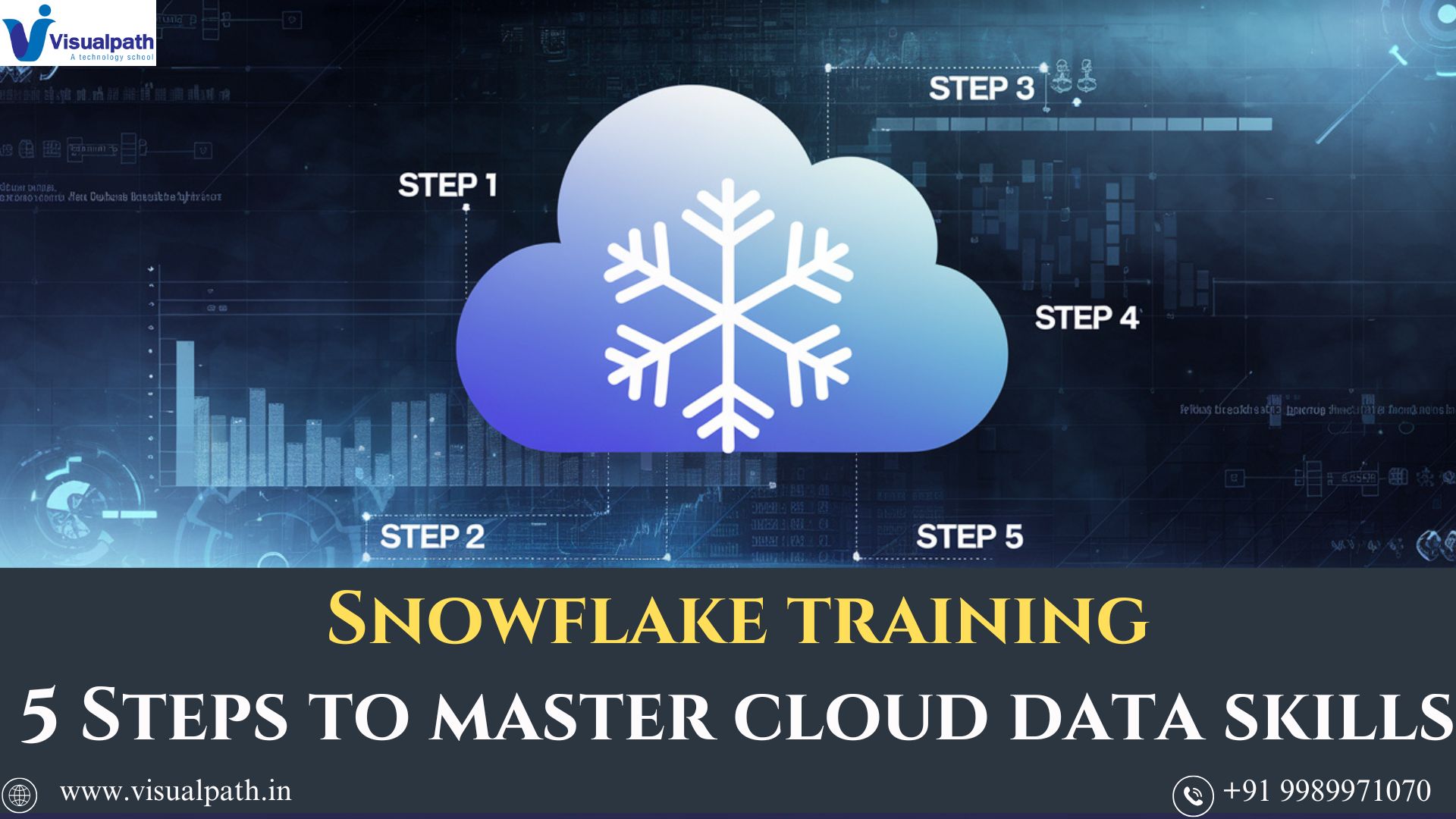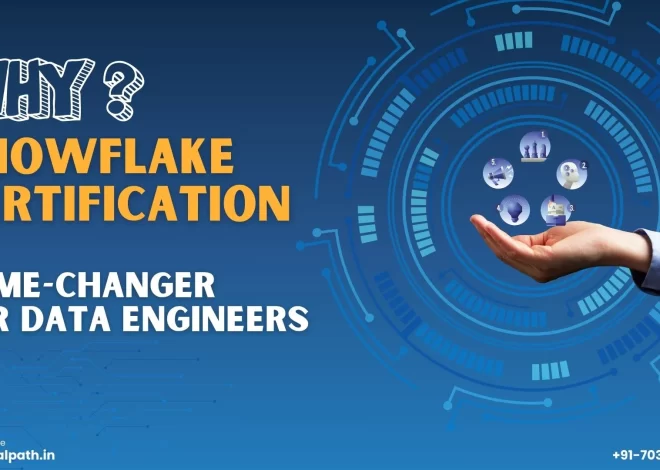Snowflake Training is one of the most sought-after programs in today’s tech landscape, especially for professionals aiming to excel in the field of data analytics and cloud-based data warehousing. Snowflake, a cloud-native data platform, has revolutionized how data is stored, shared, and analyzed. Its flexibility, scalability, and performance make it a leading choice for organizations worldwide. Whether you’re a beginner looking to enter the data industry or an experienced professional aiming to upskill, following the right steps is crucial to mastering Snowflake. For those in India, opting for Snowflake Training in Hyderabad can be a game-changer, thanks to the city’s thriving tech ecosystem and access to industry experts. Here are the five essential steps to mastering Snowflake and taking your data skills to the next level.
Step 1: Build a Strong Foundation in Snowflake Fundamentals
Every learning journey begins with mastering the basics, and Snowflake is no exception. Before diving into advanced concepts, it’s crucial to understand what makes Snowflake unique. Snowflake is a cloud-based platform that uses a multi-cluster shared data architecture, enabling seamless scalability and efficient management of structured and semi-structured data. Unlike traditional data warehouses, Snowflake separates compute and storage resources, allowing users to optimize costs and performance based on specific needs.
Through Snowflake Training, you can gain a deep understanding of these core concepts. This includes learning about virtual warehouses, data sharing, data storage, and Snowflake’s ability to integrate with cloud platforms like AWS, Azure, and Google Cloud. If you’re in India, choosing Snowflake Training in Hyderabad offers access to top-notch instructors and resources tailored to your learning needs.
During this phase, focus on getting hands-on experience with the platform. Practice creating and managing databases, loading data, and executing basic queries. Many Snowflake training programs provide live labs and projects that mimic real-world scenarios, helping you solidify your foundational knowledge. By the end of this step, you should feel confident navigating the Snowflake interface and performing basic tasks.
Step 2: Explore Snowflake’s Unique Features and Architecture
Once you’re comfortable with the basics, it’s time to dive deeper into Snowflake’s unique features and advanced architecture. Snowflake’s support for semi-structured data formats like JSON, Avro, and Parquet sets it apart from traditional data platforms. Additionally, its time travel feature allows users to access historical data at different points in time, making it easier to troubleshoot issues or recover lost data.
To truly master Snowflake, you need to understand how these features work and how they can be applied in real-world scenarios. A comprehensive Snowflake Training program will cover these topics in detail, with practical demonstrations and exercises. In particular, Snowflake Training in Hyderabad offers hands-on sessions that focus on applying these features in live use cases.
Another critical aspect of Snowflake’s architecture is its ability to scale compute and storage independently. This flexibility allows businesses to optimize costs without compromising performance. Understanding how to configure and manage these resources is essential for anyone looking to specialize in Snowflake. By mastering these advanced features, you’ll be equipped to handle complex data challenges and optimize performance for your organization.
Step 3: Learn Performance Tuning and Optimization
One of the most important skills for any Snowflake professional is the ability to optimize performance. As datasets grow in size and complexity, ensuring that queries run efficiently becomes a top priority. Snowflake offers several tools and techniques for performance tuning, such as clustering, query profiling, and partitioning.
Through Snowflake Training, you can learn how to implement these optimization strategies effectively. For example, clustering is a technique used to organize data in a way that improves query performance, especially for large datasets. Similarly, query profiling tools help identify bottlenecks and inefficiencies in your SQL queries.
Snowflake Training in Hyderabad often emphasizes performance optimization as a core module, providing case studies and real-world projects to practice these skills. You’ll also learn how to use caching effectively to speed up query execution and reduce costs. By mastering performance tuning, you’ll be able to handle large-scale data workloads with ease and deliver faster insights to your organization.
Step 4: Gain Hands-On Experience Through Projects and Certifications
To become proficient in Snowflake, you need to work on real-world projects that challenge your problem-solving and technical skills. Most Snowflake Training programs include live projects that simulate industry scenarios, allowing you to apply what you’ve learned.
Additionally, achieving Snowflake certifications can boost your credibility and open up new career opportunities. The SnowPro Core Certification is a great starting point, as it validates your foundational knowledge of Snowflake. For more advanced learners, there are certifications focused on data engineering, architecture, and advanced analytics.
If you’re considering Snowflake Training in Hyderabad, many institutes in the city offer training programs that prepare you for these certifications. They also provide access to a network of industry professionals and job placement assistance, ensuring that you’re ready to take on real-world challenges. By the end of this step, you should have a robust portfolio of projects and a certification that showcases your expertise.
Step 5: Stay Updated and Join the Snowflake Community
The tech world is constantly evolving, and Snowflake is no exception. To stay ahead of the curve, it’s essential to keep learning and stay updated on the latest features and best practices. Snowflake regularly introduces new capabilities and integrations, so make it a habit to explore release notes and attend webinars or workshops.
Joining the Snowflake community can also be incredibly beneficial. Participate in forums, attend local meetups, and connect with other Snowflake professionals to share knowledge and learn from their experiences. If you’re based in India, the Snowflake Training in Hyderabad ecosystem offers several opportunities to network with peers and industry experts. Many training institutes also organize hackathons and bootcamps, providing a platform to showcase your skills and learn from others.
By staying engaged with the Snowflake community, you’ll not only keep your skills sharp but also gain insights into how different organizations are leveraging Snowflake to solve complex data problems. This knowledge can inspire you to come up with innovative solutions and further enhance your expertise.
Conclusion
Mastering Snowflake is a journey that requires dedication, practice, and a structured approach. By following these five steps—starting with building a strong foundation, exploring advanced features, optimizing performance, gaining hands-on experience, and staying connected to the community—you can become a Snowflake expert and boost your data skills.
Enrolling in Snowflake Training is the first and most important step in this process. If you’re in India, Snowflake Training in Hyderabad offers a perfect blend of expert instruction, hands-on projects, and networking opportunities to accelerate your learning. Take the first step today and unlock a world of opportunities in the ever-evolving field of data analytics and cloud-based data warehousing.
Visualpath is the Leading and Best Institute for learning in Hyderabad. We provide Snowflake Training in Hyderabad. You will get the best course at an affordable cost.
Attend Free Demo
Call on – +91-9989971070
What’s App: https://www.whatsapp.com/catalog/919989971070/



